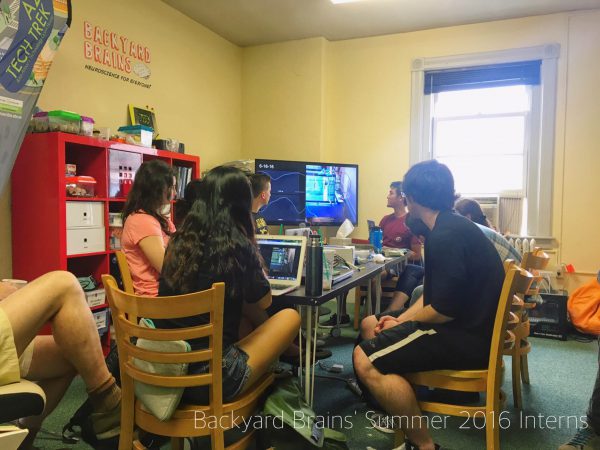-
EducationNeural recordings: Yesterday, I recorded from the neuron of the dragonfly without the lasers, just to ensure the materials are working and that I can find the TSDNs. For the neural recordings of the dragonfly, I aimed to place the electrode in the TSDN. These neurons run down the dragonfly’s neck, on the right and left […]
-
 Internship(Interns at their daily morning lab meeting) We’re excited to announce that we have 6 new interns in biology and engineering fields here for the summer! The Backyard Brains summer internship is an intensive 10 week program for students to participate in hands-on neuroscience research and experiment design with award-winning neuroscientists. Interns will be using Backyard Brains products as […]
Internship(Interns at their daily morning lab meeting) We’re excited to announce that we have 6 new interns in biology and engineering fields here for the summer! The Backyard Brains summer internship is an intensive 10 week program for students to participate in hands-on neuroscience research and experiment design with award-winning neuroscientists. Interns will be using Backyard Brains products as […]
![[Summer’16 Internship] The Dragonfly: Dragonfly neural recordings](https://cdn.hackaday.io/images/9343931466608435592.JPG)